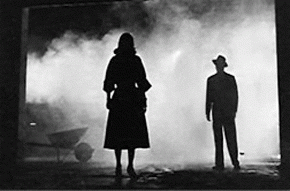Go ‘Eastman’, Young Man…writes Rabbi Laibl Wolf
Watch an old B/W movie and the lack of color takes a brief moment to register as imaginations fills in the colours.
 At the same time, the B/W stark contrasts may be the perfect choice for portraying a fractured dystopian world, or to conjure up a biographical past, or to interweave a political statement.
At the same time, the B/W stark contrasts may be the perfect choice for portraying a fractured dystopian world, or to conjure up a biographical past, or to interweave a political statement.
B/W is not entirely stark. It can possess gradations of grey as subtle as color. And silver. And beiges. And black is not black. There is jet black, deep-space black, Frederick’s of Hollywood black, midnight blue, and so on. White has, if anything, even more variations.
These thoughts occurred to me while praying this past Shabbat at a Lebanese Synagogue in Flatbush, NY. It occurred to me that there are many nations, cultures, peoples in this fascinatingly ‘technicolor’ world. Yet each is a B/W projection onto the screen of time and space – a space called planet earth. The shades of B/W human reality are an infinite array of variations on grey.
Yet, despite the subtleties available within an expertly produced B/W film, the technicolour process has bedazzled the viewer with its adventure, visual smorgasbord, and shock value. Color is a the mystery of the rainbow, the boldness of an Andy Warhol, the illumination effect that Rembrandt used to give his painting the third dimension. Color adds a complexity to the mind that pleases, excites and challenges.
I see the Jewish people through the lens of colour rather than the mysterious shades of grey. Jews have lived over 3500 years on all of the world’s continents. They aren’t a single culture, but encompass a range of cultures ranging from the Middle Eastern through European, through American though South African, through… And their spoken languages vary prolifically as do their dialects.
Furthermore, a Russian Jew looks quite different than a Moroccan Jew who looks different than an Israeli-born Jew, who looks different than… diverse facial and body characteristics that draw mystically on geography. Beyond these divergences are a veritable smorgasbord of customs and practices as various as the sands of the sea.
So here I am, an Australia Jew, raised in the European Hassidic tradition, wearing my black frock coat (‘capote’) and fedora, sitting and praying with some hundreds of Lebanese brothers and sisters who speak Arabic as their native tongue, Hebrew as a second language, and English in the world of commerce. Yet I feel totally at one with them, totally accepted, and totally comfortable. And so do they. (Although I must admit to experiencing a jolt of incongruity observing a Talmud class being dissected in Arabic!)
Yes, Lebanese Jews are different. Being of the Sefardic culture, their connection to G-d is much more direct and personal than the more complex Ashkenazi European based relationship with an Almighty. They speak the words of prayer quite matter of factly and with complete Kavana (intention and feeling). They are far less concerned by the next person’s external appearance and degree of observance. In this respect they seem to me to be more real than many of the hair-splitting and oft intolerant expositors of the contemporary western Judaism.
I leave my hosts, Rabbi Eli Elbaz and his wife Suri, enriched and animated. Not only because of their warmth and sincerity, and not only through viewing the absolutely magnificent gold and silver Aron HaKodesh (the Ark housing the scrolls of Torah) that adorns their synagogue. My enrichment has been the result of having the opportunity to view my own people through the technicolour lens of Jewish cultural diversity, yet seeing the subtleties of grey within the community itself.
So go out and paint your world. Learn from all peoples and cultures. Go Eastman, young Man.
Rabbi Laibl Wolf is the Dean of Spiritgrow – The Josef Kryss Center, Melbourne, Australia









